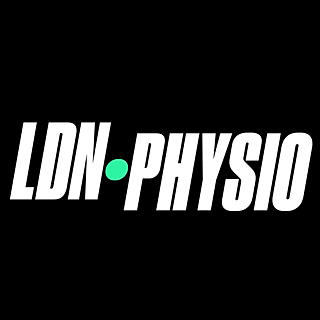Our top 5 exercises for neck pain according to research
- LDN PHYSIO
- Nov 12, 2018
- 3 min read
Are you getting pain across your neck and shoulders? Often affecting one side more than the other? You have likely tried to find something yourself online or perhaps you’ve seen a Therapist before with little change in your symptoms... Perhaps the pain is starting to affect your abilities to do things? If this sounds familiar, read on to find out about our top 5 exercises to help getting rid of it.

Neck pain is one of those things that most people ignore until it becomes a real problem and starts affecting most of your activities. Here's LDN PHYSIO's guide with a selection of evidence-based exercises that should start the process of your recovery. Like anything, this does not sort things overnight, but a graded improvement in those strengthening exercises should see your activities of daily living improve and neck pain reduce, for good. Our suggested exercises are based on a Cochrane review (Gross, 2015) of the evidence and research behind effective neck exercises.
For a comprehensive assessment and treatment of your neck, or any other problems, don't hesitate to book in with us - we'll be able to diagnose the cause of your symptoms and design an effective treatment plan for you.
1. Retraining deep neck flexors and correcting posture
Lying on your back with your head softly supported by a pillow, gradually pull your chin inwards to produce a “double chin”. You should sense the back of your neck getting close to contacting the bed below you (you probably won’t reach it – don’t worry).
Master the chin tucks and hold prior to starting your head lifts.
Lift the head up slowly whilst maintaining a chin tuck.
Until fatigue, 1-2 minutes rest, repeat 3-4 times
2. Strengthening your cervical extensors
Move onto your hands and knees with your shoulders directly over your hands and your hips directly over your knees.
Pull your shoulders gently away from your ears pushing your chest slightly upwards. Make sure to keep your elbows straight.
Tuck your chin in and slowly look down at your belly button. Whilst keeping your chin on your chest lift your head upwards. Your chin must not leave your chest – again, think “double chin”. Then slowly lower the head downwards again.
This will feel like an awkward movement and you shouldn’t be able to look forwards. If you can, your chin has left your chest.
10-20 repetitions, 1 minute rest, repeat for 3-4 sets
3. Strengthen you neck and spine stabilisers and posterior shoulder muscles. Improves posture.
Standing straight with good spinal posture - chest out, bottom out and double chin.
If you have a low-moderate intensity theraband then use this as added resistance.
Standing with straight arms by your side gently pull backwards and behind you, hold for a few seconds, then slowly return back to the beginning.
10-20 repetitions, 1 minute rest, repeat 3-4 times
Common pit falls are:
Lurching the chin forwards instead of keeping it tucked in
Bending your elbows
Shrugging your shoulders.
4. Shoulder rotational control (often weak rotator cuff muscles result in overuse of shoulder and neck muscles, and ultimately pain!)

Hold a 1-2 kg weight from around the house or just a tin of food for starters. Lying on your back place a towel underneath your elbow with your arm out to 90 degrees from your body and hold the weight in that hand.
Imagine pulling the shoulder away from the ears and tuck the chin in whilst resting the weight of your arm on the towel.
Keep your elbow at 90 degrees and rotate from your shoulder so your hand moves towards your pocket and then outwards away from you and back upwards again. That’s one repetition.
Slowly repeat up to 20-30 times, 1 min rest, repeat 3-4 sets.
5. Strengthening your spine musculature, shoulder and scapular stabilisers
Using a ball place it slightly in-front of you and to the side against a wall.
Gently lean forwards and put a tiny amount of pressure on the ball. From here engage all your muscles that you have been previously including chest forwards, bum out, double chin and pulling your shoulders away from your ears.
Your neck muscles should feel mostly relaxed whilst your muscles around the back of your arm and scapular should engage more.
Start to increase the amount of weight you place on the ball until your feel a moderate difficulty in your muscles that you could hold for over 30 seconds.
If you feel confident that you are keeping good scapular posture then start to move left-to-right, up-and-down and around in circles for 30 seconds at a time. Take 1 minute break and then repeat 4-8 times depending on tolerance.
For a comprehensive assessment and treatment of your neck, don't hesitate to book in with us - or if you have any questions on these, send us an email at hello@ldnphysio.co.uk!





Comments